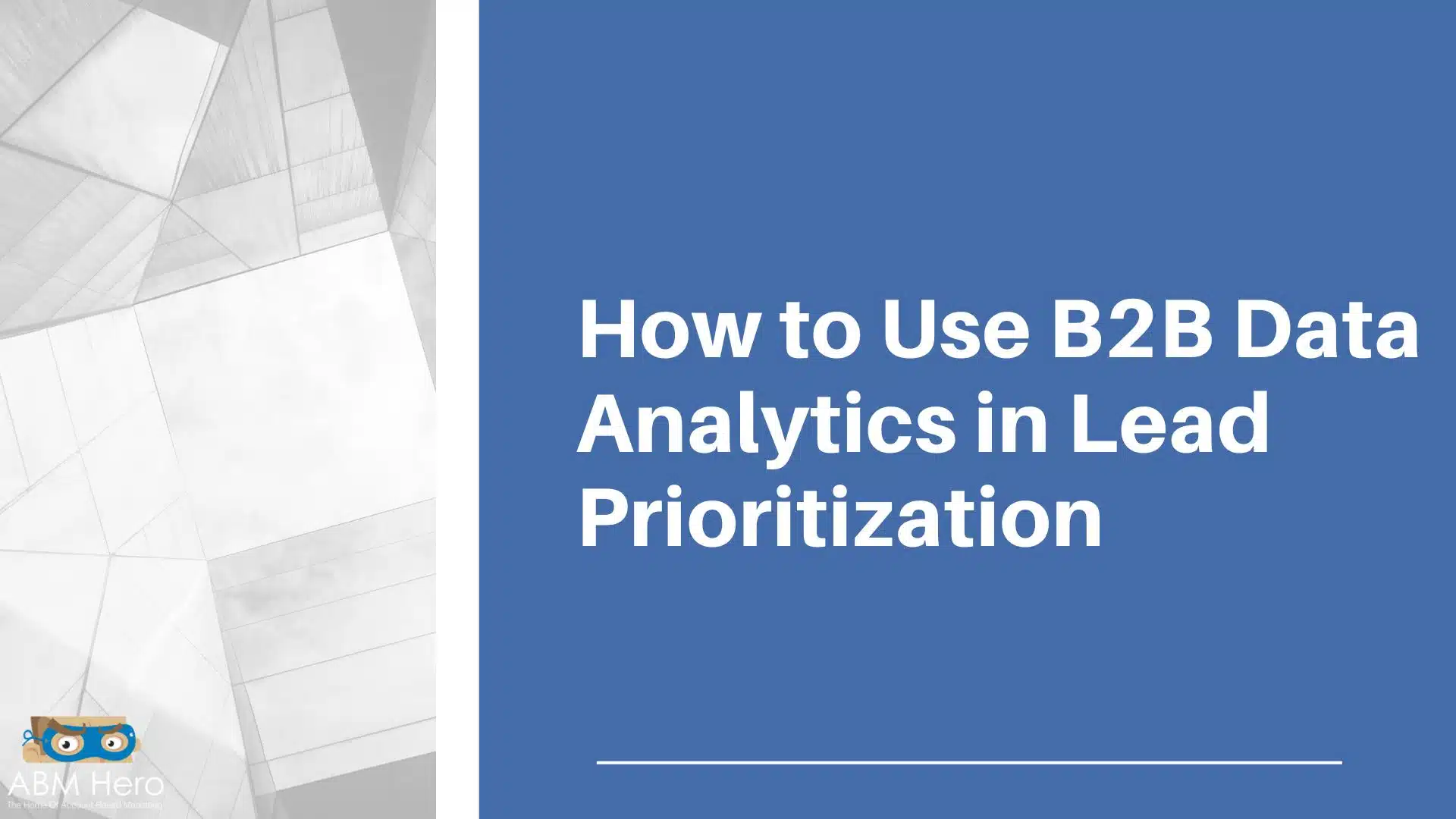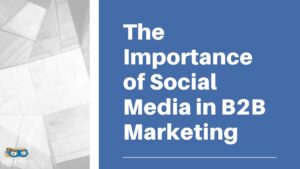As B2B marketers, we are often tasked with finding the right leads to target, then prioritizing those leads to ensure our marketing efforts are focused on the most valuable opportunities.
But how do you know which leads to prioritizing? It is where data analytics can be a powerful tool.
By leveraging data analytics, B2B marketers can gain insight into which leads are the most likely to convert, allowing them to focus their efforts on the most likely to become paying customers.
This article will discuss how data analytics can help B2B marketers prioritize their leads.
What is Lead Prioritization?
Lead prioritization in account-based marketing is a strategy marketers employ to identify and target the most promising accounts that are likely to yield the highest return on investment.
It involves gathering and analyzing data from multiple sources, such as website visits, social media interactions, and third-party data, to understand prospects’ interests and needs better.
In lead prioritization, marketers can focus their time and resources on the most valuable accounts rather than spreading their efforts too thin.
This strategy analyzes the target market, including the number of leads, average lifetime value, and acquisition cost. With this information, marketers can determine which accounts are most likely to convert and classify their lead prioritization efforts accordingly.
Marketers can re-evaluate their lead prioritization as the market shifts and changes to ensure they are targeting the right prospects.
Lead Prioritization and Data Analytics
Data analytics has become an invaluable tool for marketers in developing an optimal lead prioritization strategy.
By utilizing data analytics, marketers can use predictive and prescriptive models to identify their target customers and analyze the factors influencing their purchasing decisions.
Data analytics can also determine the lifetime value of each customer, allowing marketers to prioritize customers that are likely to provide the most value to their business.
Additionally, data analytics help marketers analyze customer behavior, enabling them to identify patterns and trends in their customer base and adjust their lead prioritization strategies accordingly.
By leveraging the power of data analytics, marketers can effectively prioritize their leads and maximize the return on their marketing efforts.
How the Prescriptive Model Works
A prescriptive model in data analytics is an optimization tool that utilizes predictive analytics to identify the best course of action for a given problem.
This model has become increasingly popular for marketers to prioritize the leads they should focus on.
By utilizing predictive analytics, this model can identify the leads most likely to convert and provide the most value to a business.
For example, an authoritarian model might assign a higher priority to leads with a higher likelihood of closing based on their demographics and conversion rate.
Alternatively, it might assign a higher priority to leads that have expressed a greater interest in the product or service through social engagements and other metrics.
This model also provides insight into which leads should be targeted first, second, third, and so on.
In addition, the model can consider factors such as location, demographic, psychographic, and behavioral data to further refine lead segmentation.
By doing so, marketers can create targeted campaigns tailored to specific leads, leading to improved conversion rates.
How the Predictive Model Works
The predictive model in data analytics is a powerful tool for lead prioritization in B2B marketing.
By leveraging machine learning algorithms, the predictive model can process large amounts of data points to detect patterns and trends that can inform actionable strategies.
For example, predictive analytics can help marketers identify which leads are most likely to respond to a particular offer or which leads are most likely to purchase a specific product.
The predictive model can also be used to identify potential leads and make more accurate predictions about their likelihood of conversion in the future.
Additionally, the predictive model can customize messaging and marketing campaigns for each lead, allowing for more targeted and practical approaches.
Measuring Customer Lifetime Value
Data analytics can be a powerful tool for management and marketers to measure customer lifetime value and manage leads.
The management can better understand their customers and develop key performance indicators (KPIs) to measure their customer lifetime value.
It can include KPIs such as customer retention, loyalty, and acquisition costs.
By leveraging data analytical tools, management can gain deeper insights into customer behavior and purchase patterns, allowing them to better identify and target customers with higher lifetime value.
For example, suppose a customer has been purchasing goods from a company for several years. In that case, they will likely continue to do so in the future, making them an attractive target for marketing campaigns.
Additionally, data analytics can monitor customer engagement and track customer journeys, enabling marketers to understand better how to optimize their lead management processes.
By gathering and analyzing data from various sources, marketers can better understand which leads are most likely to convert, allowing them to focus their resources on those.
Analyze Customer Behavior
When attempting to rank leads according to priority, it is essential to understand customers’ behavior.
By gaining insight into customers’ behavior, marketers can better target the most valuable leads and prioritize them accordingly.
It is by leveraging data to identify trends and patterns within customer behavior to understand their needs and wants better.
With this knowledge, marketers can create targeted campaigns and messages tailored to the individual customer’s needs.
It provides an opportunity to engage and convert the most valuable leads, thus increasing the return on marketing investments.
Additionally, by understanding the customer journey, marketers can better identify customer pain points and create strategies to address them.
Overall, data analytics is a powerful tool that helps B2B marketers achieve robust lead prioritization strategies and identify the best ones to onboard.
By utilizing reliable data sources and taking a data-driven approach to lead management, marketers can streamline their processes and focus on the leads most likely to convert into customers.
Not to mention segmentation, B2B marketers can personalize their strategies to target the right customers and convert leads more efficiently.
Furthermore, data analytics can pin down new marketing campaign opportunities to generate more qualified leads.





